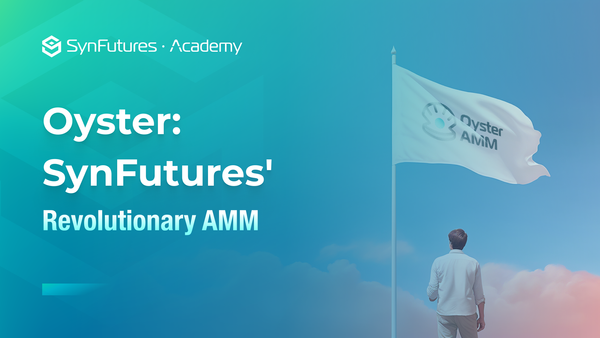Beyond Shapella: The History and Future of Ethereum Upgrades
The highly anticipated Shanghai and Capella upgrades (also referred to as “Shapella”) on the Ethereum network took place on April 12, 2023, bringing about significant changes to the blockchain platform. With the growing popularity of decentralized applications and the rise of the DeFi sector, the success of the upgrade will have a significant impact on the future of blockchain technology.
But how did we get to this point? And what’s next for the Ethereum network? Let's discuss this.
Byzantium
Launched in October 2017, Byzantium was the first significant upgrade after multiple forks in response to DoS attacks. It introduced several new features and enhancements to improve the platform's security, stability, and efficiency. Some key upgrades included the introduction of zk-SNARKs, a type of zero-knowledge proof enabling private transactions, reducing block rewards from 5 ETH to 3 ETH, and improvements to the EVM, such as the introduction of a new opcode for faster verification of contract code. Byzantium also laid the foundation for the subsequent Constantinople upgrade.
Constantinople
Released in February 2019, Constantinople was a major upgrade that introduced several EIPs (Ethereum Improvement Proposals) to improve the network's efficiency and reduce the mining rewards. Some of the critical improvements included the implementation of EIP 145 (Bitwise shifting instructions), which helped optimize the smart contract execution process, and EIP 1014 (Skinny CREATE2 opcode), which allowed developers to deploy contracts to addresses that did not exist yet on the blockchain.
Istanbul
Launched in December 2019, Istanbul was another significant upgrade to Ethereum that implemented several EIPs to improve network security and performance. One of the key improvements was the implementation of EIP 152 (Blake2b compression function), which helped reduce the amount of data required to validate transactions on the network. Another change was the implementation of EIP 1108 (Reduce alt_bn128 precompile gas costs), which helped optimize the zk-SNARKs' cryptographic function.
The Muir Glacier upgrade followed in January 2020, which postponed the difficulty bomb designed to increase mining difficulty and promote the transition to proof-of-stake.
Berlin
Released in April 2021, Berlin was a minor upgrade compared to its predecessors but introduced several changes to enhance the network's gas efficiency and increase overall security. One of the fundamental changes was the implementation of EIP 2565 (ModExp gas cost), which aimed to optimize the gas cost of the modular exponentiation operation. Another necessary change was the implementation of EIP 2929 (Gas cost increases for state access opcodes), which aimed to increase the cost of specific opcodes used for reentrancy attacks.
London
Launched in August 2021, London was another major upgrade to Ethereum that aimed to improve the network's efficiency and reduce transaction fees. One of the main improvements was implementing EIP 1559 (Fee market change for ETH 1.0 chain), which introduced a new transaction pricing mechanism for the volatility of transaction fees, making them more predictable for users. This upgrade also brought the implementation of EIP 3198 (BASEFEE opcode), which helped improve the predictability of the gas price for users.
Altair
Launched in October 2021, Altair was the first major upgrade to Ethereum's Beacon Chain, which is the core of Ethereum's transition from a Proof of Work (PoW) to a Proof of Stake (PoS) consensus mechanism. This upgrade introduced light client support, improved syncing, and the ability to propose and vote on new upgrades, among other features.
The Arrow Glacier Upgrade
In December 2021, the Arrow Glacier Upgrade pushed Ethereum's "difficulty bomb" back by several months. The difficulty bomb is a built-in feature of Ethereum that gradually increases the difficulty of mining new blocks over time, eventually making mining so difficult that it becomes infeasible. This upgrade was essential to help maintain Ethereum's stability and prevent the network from grinding to a halt due to challenging mining conditions.
Gray Glacier
Launched on June 30, 2022, the Gray Glacier network upgrade pushed back the difficulty bomb by three months. This upgrade was like the Arrow Glacier and Muir Glacier upgrades and helped ensure the stability of the Ethereum network by delaying the effects of the difficulty bomb.
The Bellatrix Upgrade
Launched in September 2022, The Bellatrix upgrade was the second major upgrade to Ethereum's Beacon Chain. It was designed to prepare the network for The Merge, the final step in Ethereum's transition to a PoS consensus mechanism. This upgrade included several changes to the Beacon Chain, including updates to the fork choice rules and validator penalties for inactivity and slashable offenses.
Paris – The Merge
Launched in September 2022, the Merge was the most significant upgrade in Ethereum's history since Homestead. This upgrade was triggered by the proof-of-work blockchain passing a total terminal difficulty, which signaled the start of The Merge transition. The Paris upgrade was a crucial step in this transition, as it switched off the PoW mining algorithm and associated consensus logic and switched on PoS instead.
Shanghai/Capella
The most recent upgrade brings staking withdrawals to the execution layer, enabling stakers to withdraw their ETH from the Beacon Chain to the execution layer. In tandem with the Capella upgrade, blocks can accept withdrawal operations, allowing stakers to withdraw their ETH in sync.
For more milestones in the Ethereum roadmap, check out the history of Ethereum on the official site.
Beyond Shanghai
When discussing the Ethereum roadmap, it's easy to get caught up in the hype of the most recent upgrade, with 'The Merge' forming its pinnacle.

However, the roadmap encompasses much more than just that. Several other upgrades are just as critical to the platform's long-term success. These are all being worked on simultaneously, so we can expect these next:
Updated roadmap diagram! pic.twitter.com/MT9BKgYcJH
— vitalik.eth (@VitalikButerin) November 4, 2022
- The Surge aims to improve the speed of Ethereum and increase its transaction throughput. The goal of 'The Surge' is to settle 100,000 transactions per second, a target that would make Ethereum one of the fastest and most efficient blockchains in the world. To achieve this, 'The Surge' includes several sub-projects, including zkEVM-compatible rollups, which can significantly improve Ethereum's scalability.
- The Scourge is focused on censorship risks and aims to produce reliable and neutral transaction inclusion. As you may know, censorship is a significant concern in the cryptocurrency space, as it can lead to centralization and undermine the principles of decentralization. 'The Scourge' aims to address these issues and ensure that Ethereum remains a censorship-resistant platform that can be used by anyone, anywhere, without fear of being silenced.
- The Verge focuses on simplifying block verification by requiring a small amount of data. Zero-knowledge proofs and SNARKs are used to achieve this goal, and we have already seen the deployment of several ZK proofs and SNARKs in recent months.
- The Purge is designed to simplify the Ethereum protocol. Specifically, this upgrade aims to reduce the costs and technicalities of participating in Ethereum by clearing history. Before this can happen, however, there needs to be a method to store legacy data, and EIP4444 is the current approach.
- The Splurge is dedicated to fixing anything that falls outside the categories of the other upgrades. These are mainly low-priority tasks that don't fit elsewhere, but they are still essential for improving the overall user experience of Ethereum.
Shapella is arguably the most exciting update to the Ethereum network, but there's much to look forward to in the future. What are your thoughts on these upgrades? Tag @SynFuturesDeFi on Twitter with the hashtag #SynAcademy and share your thoughts.
Discover SynFutures' crypto derivatives products: www.synfutures.com/.
Disclaimer: SynFutures Academy does not guarantee the reliability of the site content and shall not be held liable for any errors, omissions, or inaccuracies. The opinions and views expressed in any SynFutures Academy article are solely those of the author(s) and do not reflect the opinions of SynFutures. The SynFutures Academy articles are for educational purposes or information only. SynFutures Academy has no relationship to the projects mentioned in the articles, and there is no endorsement for these projects. The information provided on the site does not constitute an endorsement of any of the products and services discussed or investment, financial, or trading advice. A qualified professional should be consulted prior to making financial decisions.




